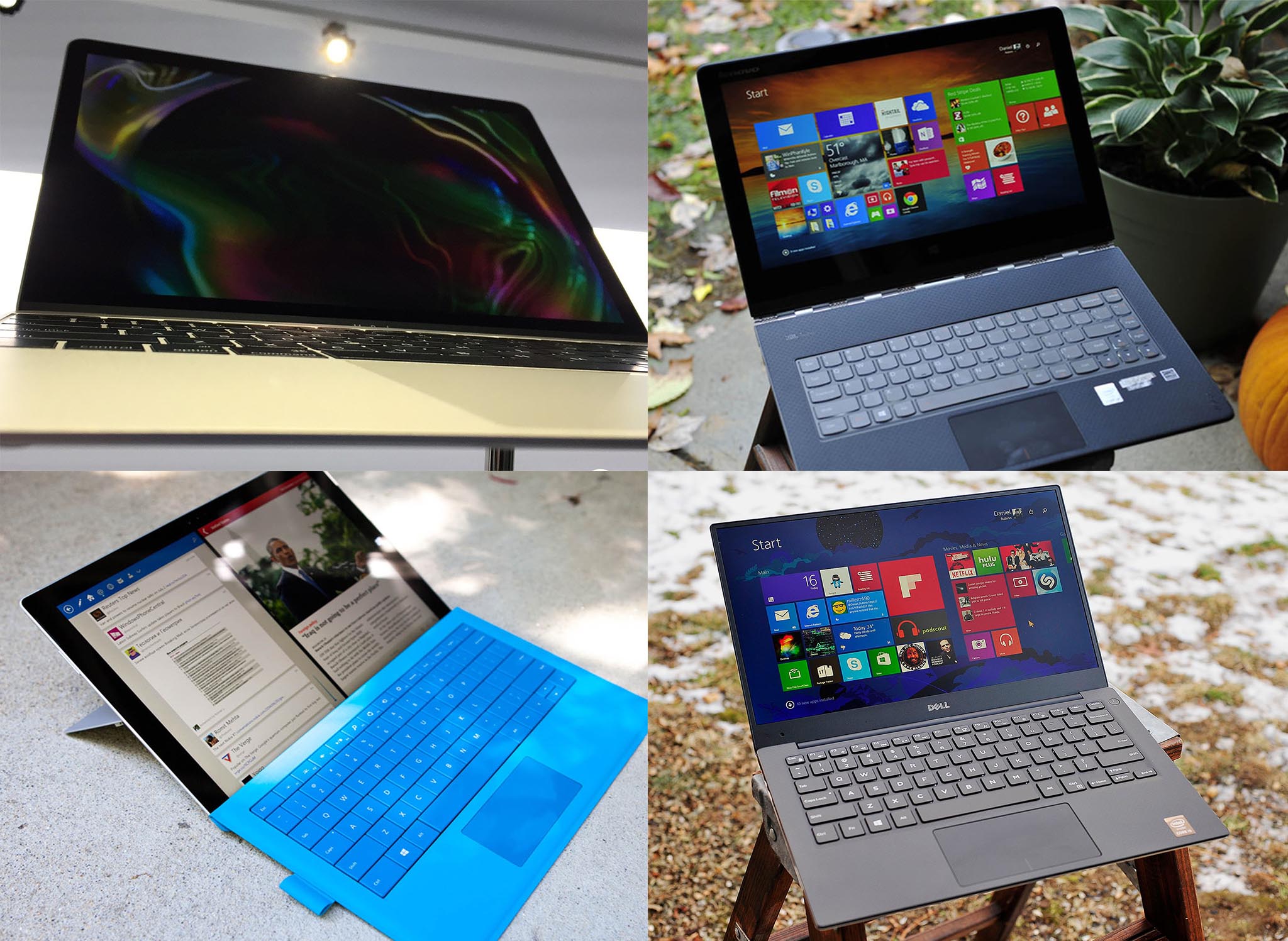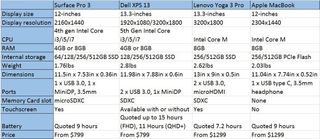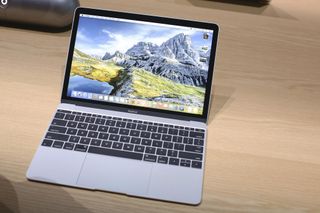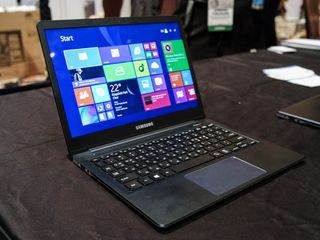How Apple's MacBook stacks up against the Windows competition
Apple claims to have reinvented the Notebook with the new MacBook. But there's a few Windows 8.1 powered devices out there that might have something to say. Here's how they stack up.

Comparing notebooks, especially when you're buying one with your own money, goes beyond a simple spec-on-spec shoot out. But, that's as good a place as any to start. We've lined up three Windows 8.1 devices of similar size and price bracket to the new MacBook that are currently on the market to go toe-to-toe in a quick shootout with Apple's newest, and gold-est, MacBook.

Even the facts and figures show that Microsoft has some pretty fierce competition in its stable. The Yoga 3 Pro launched in late 2014 and is another premium, Core M powered Ultrabook. The Surface Pro 3 is technically a tablet, but with an optional keyboard dock it becomes every bit the laptop. And the new Dell XPS 13 packs a 13.3-inch notebook into the form factor of an 11-inch. Apple isn't the only one doing wonders with shrinking machines.
Here's one point that immediately jumps out: ports. Sure, it depends on your purpose, but the new MacBook has just one USB-C port for everything. And that everything includes needing to buy an $80 adapter to do anything. Can't plug in a regular USB device such as a phone or tablet, camera, there's no memory card slot, nothing. So you need this adapter. USB-C is the future. But does the future also involve removing everything else that's useful? The Windows competitors listed aren't what you'd call chunky, or heavy, but they all manage to include some basic ports: full sized USB, memory card slots, outputs for displays. The new MacBook won't even connect to Apple's own external displays out of the box.

The MacBook is a gorgeous looking machine, though. Apple generally does design pretty well and this is no exception. The colors are a nice touch, and while gold for a laptop will split opinions, the space gray looks very nice. And Apple finally went Retina on a sub-13 incher. While it's likely a great looking display, you'll be equally as pleased with the display on the Surface Pro 3 which is closest in terms of resolution and size. The Yoga 3 Pro and the XPS 13 both have QHD+ 3200x1800 resolution options on a slightly bigger panel, and both are pretty amazing to look at. Oh, and all three of the Windows devices have touchscreens at least as an option.
And once you've seen the Infinity Display from Dell, be it 1080p or QHD+, bezels become apparent wherever you go.
Any serious comparisons such as battery life, general performance and so on will only arrive when real people get the real MacBook in their hands away from Apple's launch event. But one thing is clear: It's really nice, but we've got some equally exciting options to choose from running Windows, too.

There is, another, too. One we haven't mentioned yet and for good reason. The new Samsung Ativ Book 9 could be the single closest competitor to the MacBook when it comes to the hardware. It's about the same size, weight, similarly priced, Core M power and has a high-res, non-touch display. We've got an Ativ Book 9 on the way to take a proper look at. We were really impressed with it back at CES, and now it's actually on sale, there's another Apple v Samsung battle to be had.
Get the Windows Central Newsletter
All the latest news, reviews, and guides for Windows and Xbox diehards.
So stay tuned for more on that.

Richard Devine is a Managing Editor at Windows Central with over a decade of experience. A former Project Manager and long-term tech addict, he joined Mobile Nations in 2011 and has been found on Android Central and iMore as well as Windows Central. Currently, you'll find him steering the site's coverage of all manner of PC hardware and reviews. Find him on Mastodon at mstdn.social/@richdevine